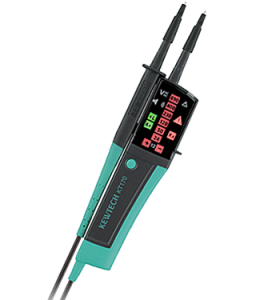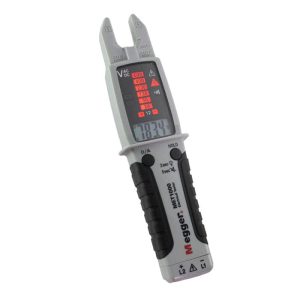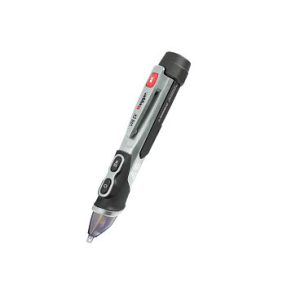Testing the presence and level of voltage in electrical circuits and devices can be done with the use of voltage detectors. They can assist you in avoiding electric shocks, resolving issues, and ensuring safety.
However, voltage detectors come in a wide variety of styles and models, each with a unique set of capabilities. How do you pick the ideal one for your requirements?
Table of Contents
ToggleFour well-known voltage detectors will be compared in this article:
the Kyoritsu KT170, the Megger MET1000, the Megger VF6, and the Kyoritsu KT171. We’ll examine their advantages and disadvantages and offer some suggestions on where to get them.
We will also go over the significance and significance of the safety regulations they adhere to. You will know more about these voltage detectors and how to utilize them by the time this essay is finished.
Comparing Voltage Detectors Megger MET1000, Megger VF6, Kyoritsu KT170, and Kyoritsu KT171 in Detail
Testing the presence and level of voltage in electrical circuits and devices can be done with the use of voltage detectors. They can assist you in avoiding electric shocks, resolving issues, and ensuring safety.
However, voltage detectors come in a wide variety of styles and models, each with a unique set of capabilities. How do you pick the ideal one for your requirements? Four well-known voltage detectors will be compared in this article: the Kyoritsu KT170, the Megger MET1000, the Megger VF6, and the Kyoritsu KT171.
We’ll examine their advantages and disadvantages and offer some suggestions on where to get them. We will also go over the significance and significance of the safety regulations they adhere to. You will know more about these voltage detectors and how to utilize them by the time this essay is finished.
Four well-known voltage detectors will be compared in this article: the Kyoritsu KT170, the Megger MET1000, the Megger VF6, and the Kyoritsu KT171. These detectors are made to check whether there is voltage present and at what level in electrical devices and circuits.
They can assist you in avoiding electric shocks, resolving issues, and ensuring safety. They are suitable for various users and circumstances despite having distinct features and functionalities. Let’s examine each of them more closely.
The Megger MET1000 is a voltage detector, but it can also do more. It is a genuine RMS electrical tester that is capable of measuring a wide range of variables, including AC/DC voltage, current, resistance, frequency, continuity, and diode test. It boasts a large LCD backlit display that provides clear and precise readings.
Additionally, it has an integrated torch that can light up dim areas. Safety regulations for the Megger MET1000 include CAT IV 600V and CAT III 1000V. It is hence capable of withstanding high-energy transient overvoltages that could happen in power distribution networks.
A versatile and precise tool for measuring and testing electrical circuits and devices is the Megger MET1000. Additionally, it is capable of detecting low battery and ghost voltages. However, of the four detectors, it is also the most pricey and bulky option.
It weights 280g and has a $200 price tag. It is appropriate for qualified electricians who want a solid and all-inclusive instrument for their work.
The Megger VF6 is an AC voltage detector for hazardous areas that can detect voltages between 12V and 1000V and provide visual, auditory, and vibrational alarms. It contains an integrated white LED torch for low light.
It meets CAT IV 600V safety requirements. It is hence capable of withstanding high-energy transient overvoltages that could happen in power distribution networks. The Megger VF6 is intended for use in potentially explosive or incendiary conditions, such as gas platforms and other petrochemical settings.
Its EX rating attests to its suitability for these locations. A bright red LED embedded within the white nylon tip, an audible sounder, and a vibration alert are used to detect AC voltage. When wearing ear protection or working in noisy environments, the vibration alert is especially helpful.
The Megger VF6 cannot, however, test for continuity or monitor DC voltage. It can only reveal whether AC voltage is present or not. It is about $100 in price and 190g in weight. It is appropriate for industrial employees that want a secure and straightforward instrument for their job.
The Kyoritsu KT170 and KT171 have similar features and designs, however the KT171 has a more accurate LCD display and an overrange indicator. They are voltage testers that utilize LEDs to measure AC/DC voltage up to 690V.
They can also conduct continuity tests, phase rotation tests, and single-pole phase tests. They feature various test tips, a penlight, and an audio signal. Their safety ratings are CAT III 690V and CAT IV 600V. This means that they are capable of handling high-energy transient overvoltages that could happen in building installations and power distribution systems.
With LEDs that light up in accordance with the voltage level, the Kyoritsu KT170 and KT171 are straightforward and reasonably priced instruments for testing AC/DC voltage. They can also do single-pole phase tests by using an LED to indicate phase polarity, phase rotation tests by using LEDs to indicate phase sequence, and continuity tests by using an LED and a buzzer to indicate resistance level.
They come equipped with a penlight to illuminate measurement locations, an auditory indicator to confirm measurements, and interchangeable test tips that can range in size from 2mm to 4mm, depending on the task. When working with various terminal or socket types, variable test tips are helpful.
The Kyoritsu KT171 contains a second LCD display that, when used in auto-range mode, can display more accurate AC/DC voltage measurements. Additionally, it has a faster response time of about 1 second between 90% and 100% of each voltage level and an overrange indication that displays “OL” when the voltage exceeds the range limit. When working with low or high voltages that the LEDs are unable to clearly show, the LCD display is helpful.
The Kyoritsu KT170 weighs 190g and costs about $80. The Kyoritsu KT171 weights 190g and costs about $100. They are appropriate for common users who require a convenient and user-friendly tool for their work.
You should be aware of the safety regulations that the voltage detectors adhere to in addition to their features and functions. These specifications show the degree of protection offered by the detectors from electric shocks and overvoltages. The CAT III and CAT IV safety standards are the most often used for voltage detectors.
CAT III stands for Category III, which denotes that the detector is capable of coping with transient overvoltages that may happen in building systems, including fixed equipment, distribution panels, and circuit breakers. CAT III detectors feature a high level of protection against electric shocks and are ideal for indoor use.
The designation “CAT IV” denotes that the detector is capable of handling transient overvoltages that could happen in power distribution systems, including overhead lines, subterranean cables, and service entrances. CAT IV detectors feature greater levels of protection against electric shocks and are suited for outdoor use.
The voltage detectors that we compared have CAT III and CAT IV ratings of 690 and 600 volts, respectively. This indicates that they can manage transient overvoltages up to 600V in power distribution systems and 690V in building installations.
For the majority of applications and settings, these ratings are adequate. However, you should look for detectors with higher ratings or additional certifications if you need to work in more hazardous environments or with higher voltages.
We have compared the Megger MET1000, the Megger VF6, the Kyoritsu KT170, and the Kyoritsu KT171 voltage detectors. We have seen that they are ideal for a variety of people and circumstances and have a variety of features and functions.
The most adaptable and precise option is the Megger MET1000, but it’s also the priciest and bulkiest. It can test various electrical device and circuit components and measure a variety of parameters. The Megger VF6 is the only one with a vibration alarm and a hazardous area design, however it is unable to monitor DC voltage or carry out continuity tests.
It can detect AC voltage and inform the user visually, audibly, and vibratorily. The Kyoritsu KT170 and KT171 have similar features and designs, however the KT171 has a more accurate LCD display and an overrange indicator.
They can do single-pole phase tests, phase rotation tests, and continuity tests, as well as test AC/DC voltage using LEDs. They also have changing test tips, an audio signal, and a penlight. Your demands, finances, and preferences will determine the best recommendations for purchasing these voltage detectors.
Before choosing a detector:
You should take into account its features, functions, performance, safety, price, and quality. Additionally, pay attention to their compliance with safety standards like CAT III 690V and CAT IV 600V, which show how well-equipped they are to handle high-energy transient overvoltages. We sincerely hope that this guide has aided you in making the finest voltage detector decision possible.
We have compared the Megger MET1000, the Megger VF6, the Kyoritsu KT170, and the Kyoritsu KT171 voltage detectors. We have seen that they are ideal for a variety of people and circumstances and have a variety of features and functions.
The most adaptable and precise option is the Megger MET1000, but it’s also the priciest and bulkiest. It can test various electrical device and circuit components and measure a variety of parameters.
The Megger VF6 is the only one with a vibration alarm and a hazardous area design, however it is unable to monitor DC voltage or carry out continuity tests. It can detect AC voltage and inform the user visually, audibly, and vibratorily.
The Kyoritsu KT170 and KT171 have similar features and designs, however the KT171 has a more accurate LCD display and an overrange indicator. They can do single-pole phase tests, phase rotation tests, and continuity tests, as well as test AC/DC voltage using LEDs. They also have changing test tips, an audio signal, and a penlight.
Your demands, finances, and preferences will determine the best recommendations for purchasing these voltage detectors. Before choosing a detector, you should take into account its features, functions, performance, safety, price, and quality.
Additionally, pay attention to their compliance with safety standards like CAT III 690V and CAT IV 600V, which show how well-equipped they are to handle high-energy transient overvoltages. We sincerely hope that this guide has aided you in making the finest voltage detector decision possible.




